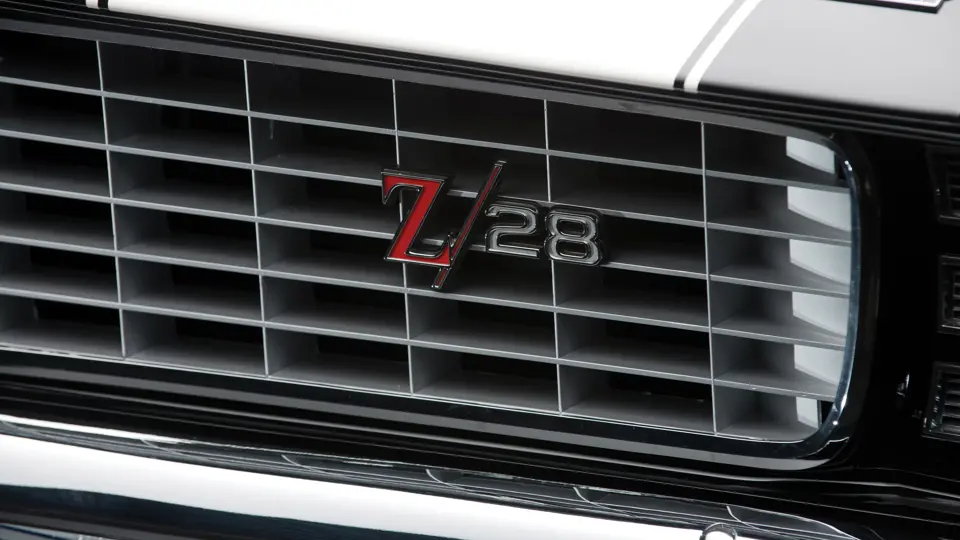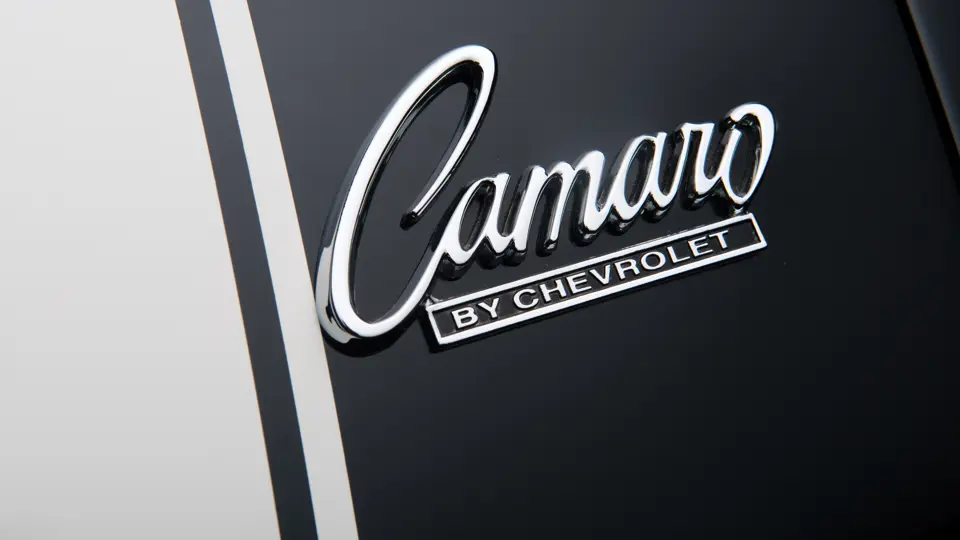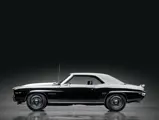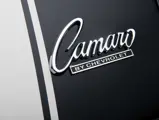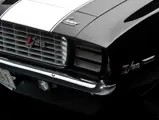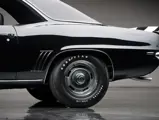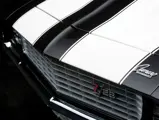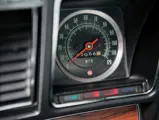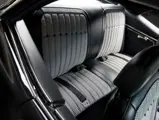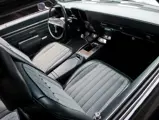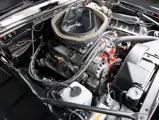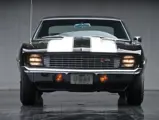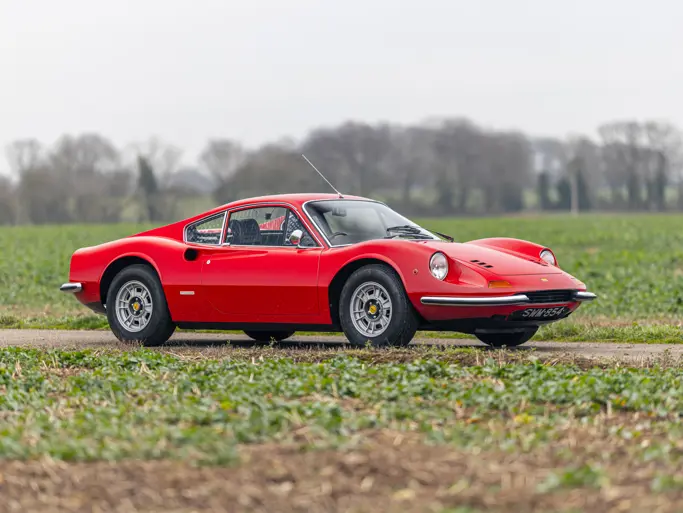360 bhp, 302 cu. in. OHV V-8 engine, four-speed manual transmission, coil spring independent front suspension, live rear axle with semi-elliptic leaf springs, and four-wheel power hydraulic disc brakes. Wheelbase: 108 in.
Although Chevrolet’s Camaro was inarguably a response to Ford’s incredibly successful Mustang, in a way Chevy had the last laugh. Certainly no Mustang model has become as iconic as the Z28 Camaro. It surely wasn’t planned that way. If it had been, Chevrolet would have conjured up a name that evoked style and performance, as opposed to using the alphanumeric option code applied to the performance car package.
“Z-codes” were already part of Chevy parlance when the Z28 option was introduced in December 1966, just three months after the car itself debuted. The first, Z11, was applied to 427-powered factory drag race cars in 1963. Whether Z28 was chosen for any particularly reason is not known, but in English, it was known as “Special Performance Package.” Intended for SCCA Trans-American Sedan competition, it consisted of a solid-lifter, 302-cubic inch small block V-8, close-ratio four-speed transmission, positraction rear axle, and power disc brakes. It was the brainchild of Chevy performance guru Vince Piggins, who envisioned a race-ready Camaro available “off the shelf” at any dealership. Trans-Am had a five-liter displacement limit, so the 327 was de-stroked by a quarter inch for a tidy 4.95 liters. Conservatively rated at 290 brake horsepower, it had an aluminum intake manifold mounted with a 780 CFM Holley four-barrel. The suspension was also upgraded, and in a marketing move, broad racing stripes and “302” fender emblems were applied.
In 1968, “Z/28” logos were applied to the rear fenders, and in 1969, a Hurst shifter was adopted, along with a 12-bolt rear axle with standard 3.73 gears. The 302 had 11:1 compression, forged pistons, and a forged steel crankshaft and connecting rods. Z28 production had grown modestly from 1,002 in the 1967 model year to 7,199 for 1968. Nineteen-sixty-nine had an extended model year, which helped boost production over 20,000. Twenty-thousand Camaros with “Z/28” on their sides ensured that every adolescent male knew exactly what it meant, while his friends were still puzzling to differentiate a Mustang Mach 1 from a Boss 302.
This Z28 Camaro Coupe, built at the Norwood, Ohio, plant in the first week of May 1969, has the sought-after dealer-installed 360 brake horsepower dual-quad option and rare JL8 four-wheel disc brakes. The carburetors sit on a cross-ram manifold, and the engine compartment is richly detailed. The recipient of a frame-off restoration by Stan’s Restoration, of Winston-Salem, North Carolina, in 2005, it was refreshed by JenJacs Restoration in Savannah, Georgia, in 2011. Gorgeous in deep gloss black with white stripes, it has a black interior with deluxe black-and-white houndstooth seats. Matching numbers and date codes on the drivetrain have all been verified, and it is accompanied with some original documentation, including a damaged but decodable build sheet. Surely it is the epitome of the first-generation Z28 Camaro, and it is, without question, one of, if not the finest, examples of its kind that we have had the pleasure of offering at auction.


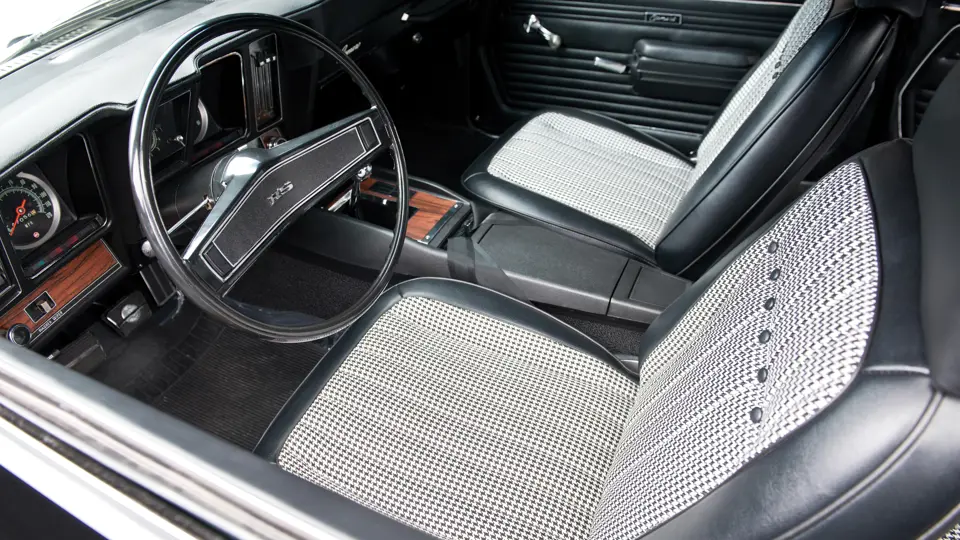

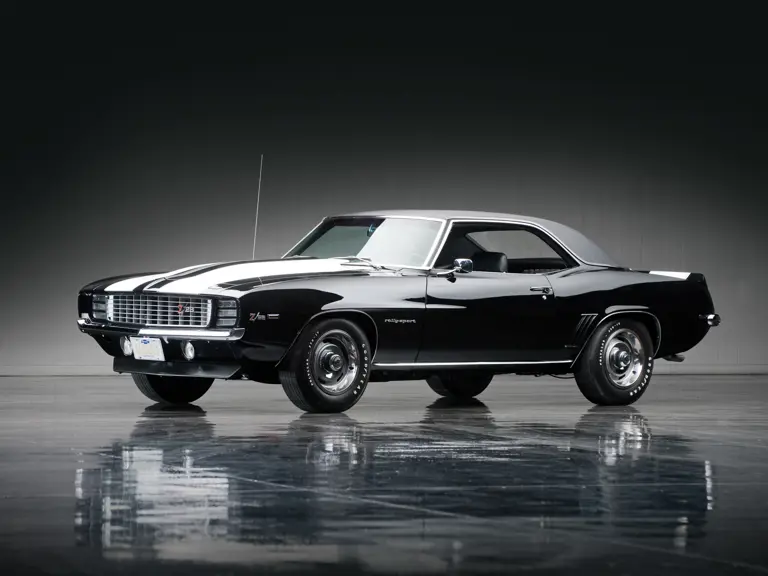
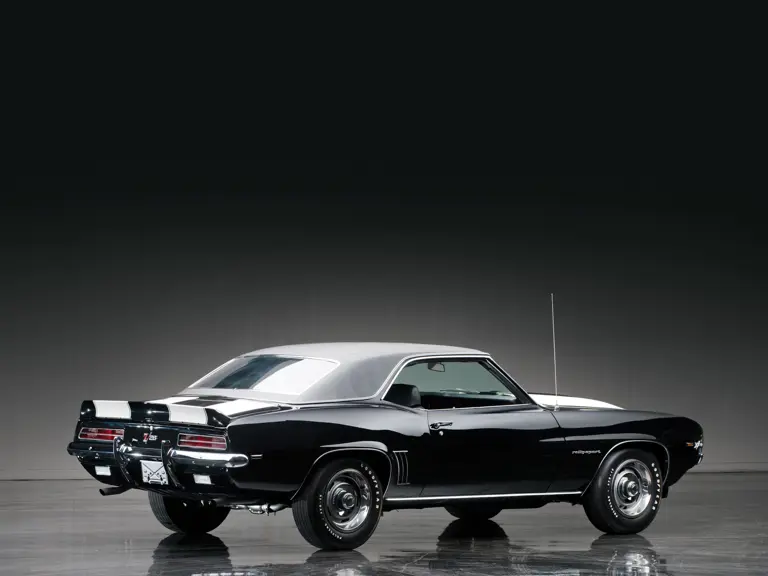
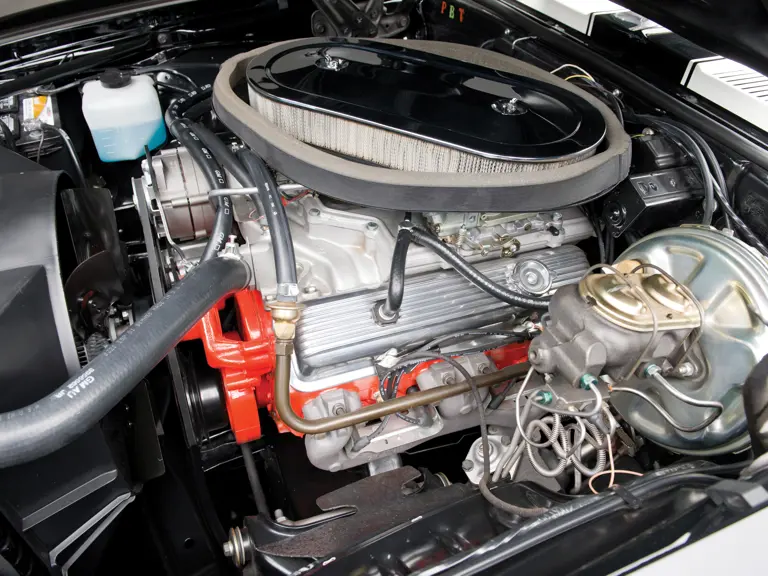
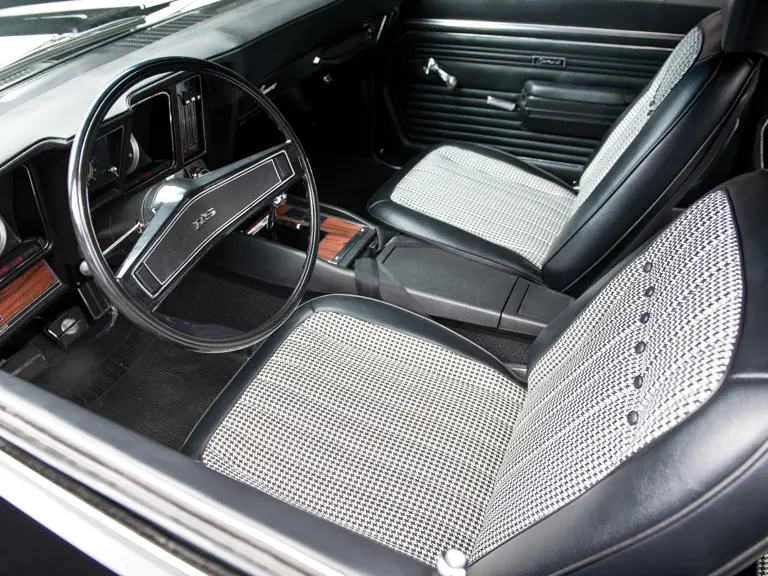
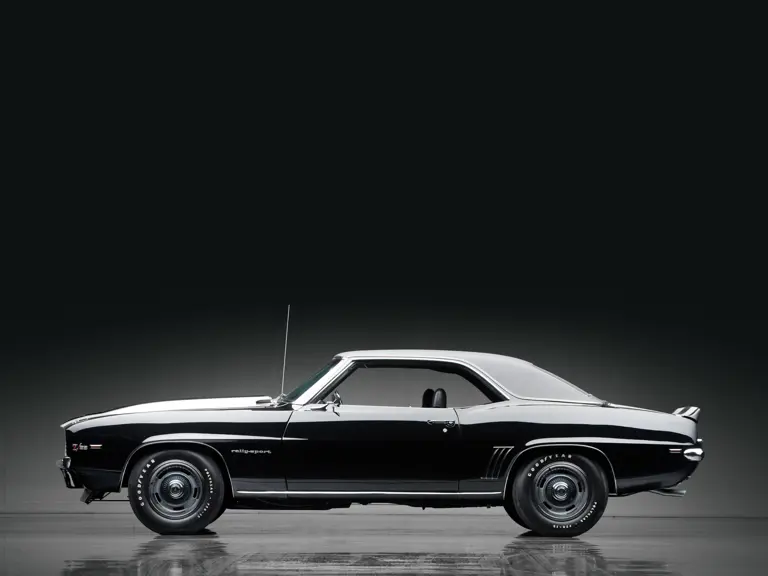
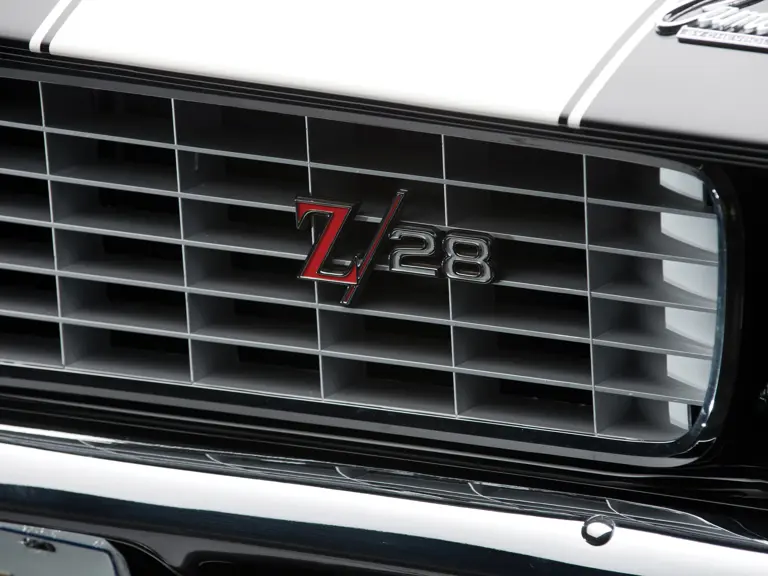
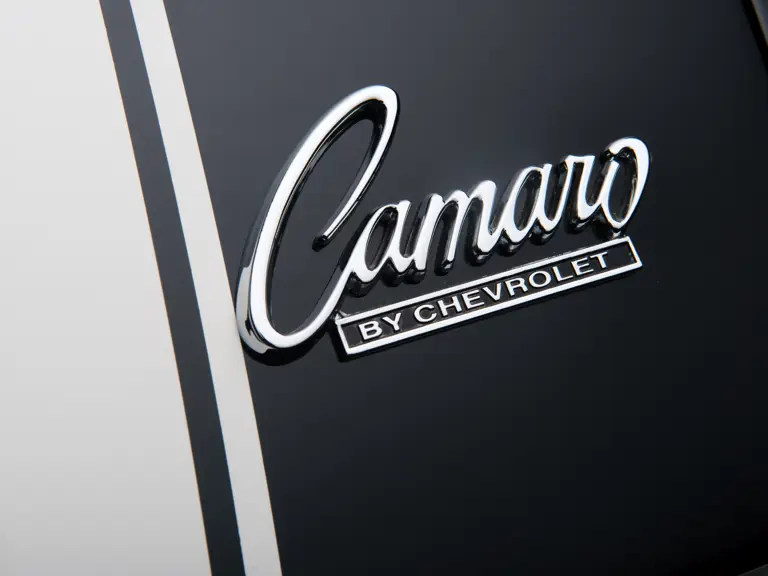
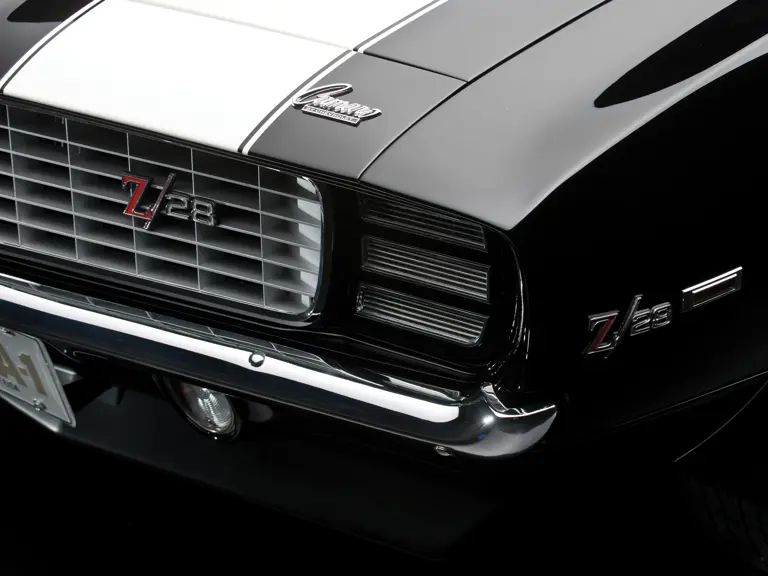
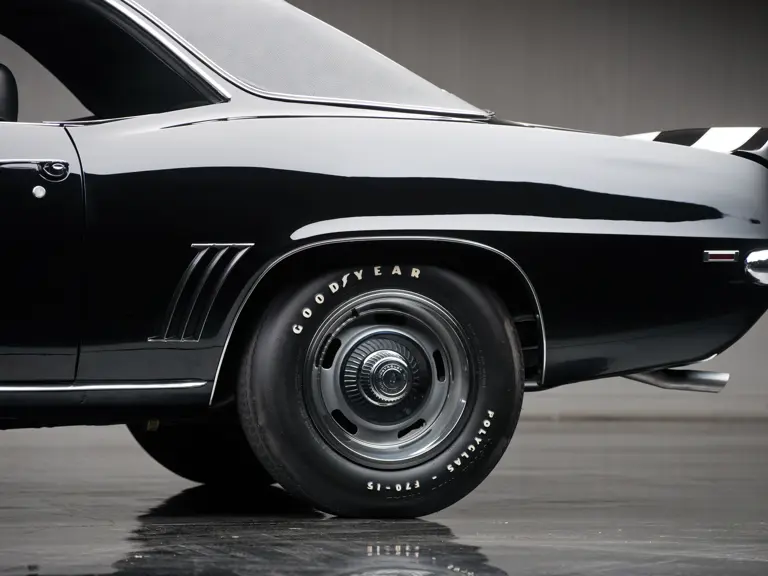
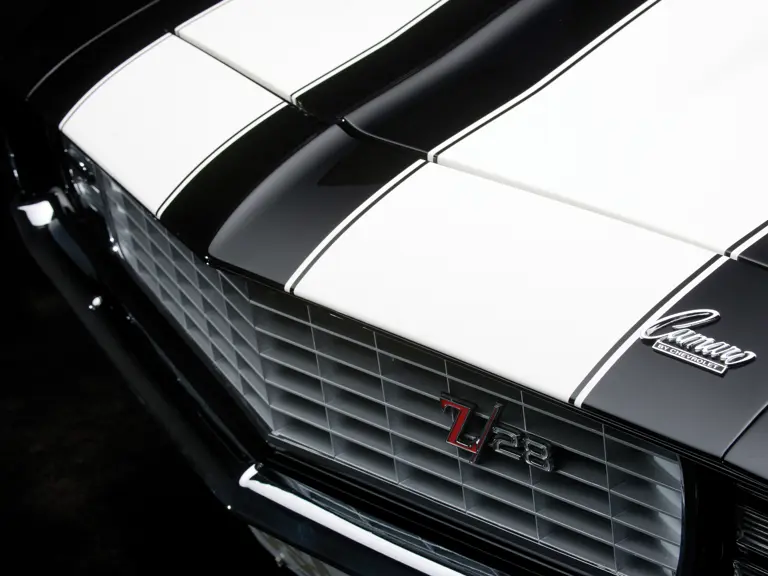

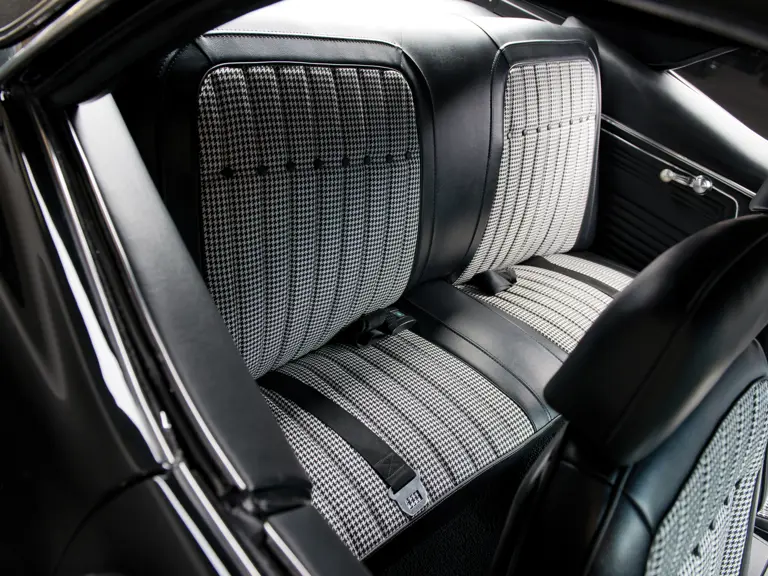
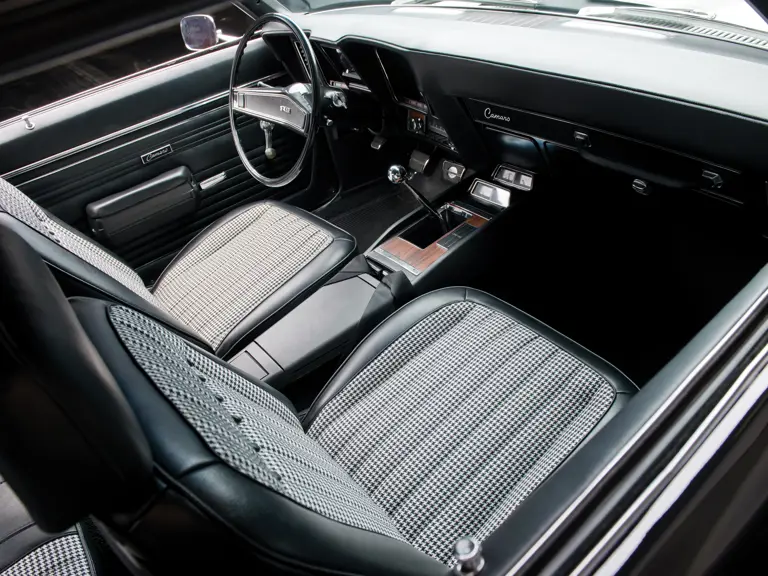
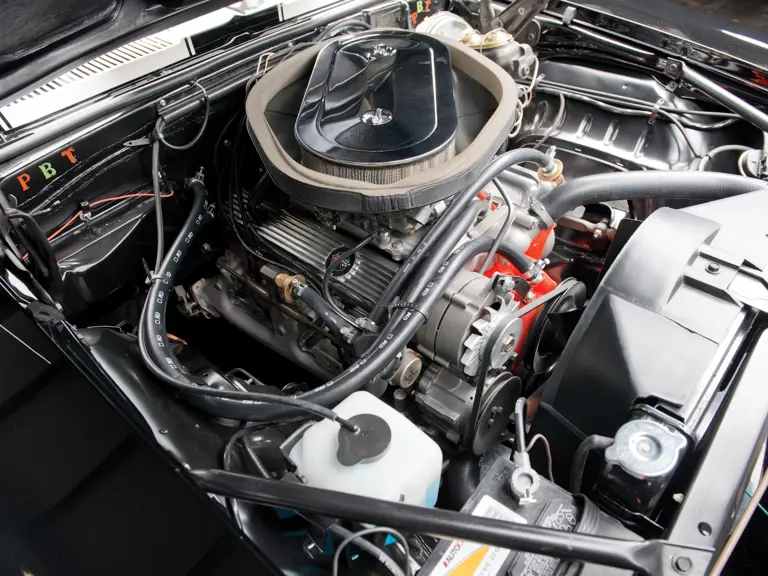
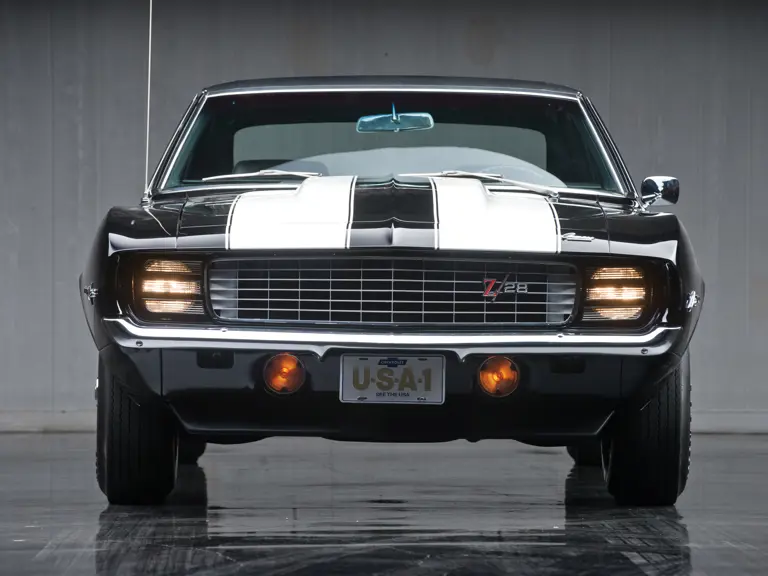
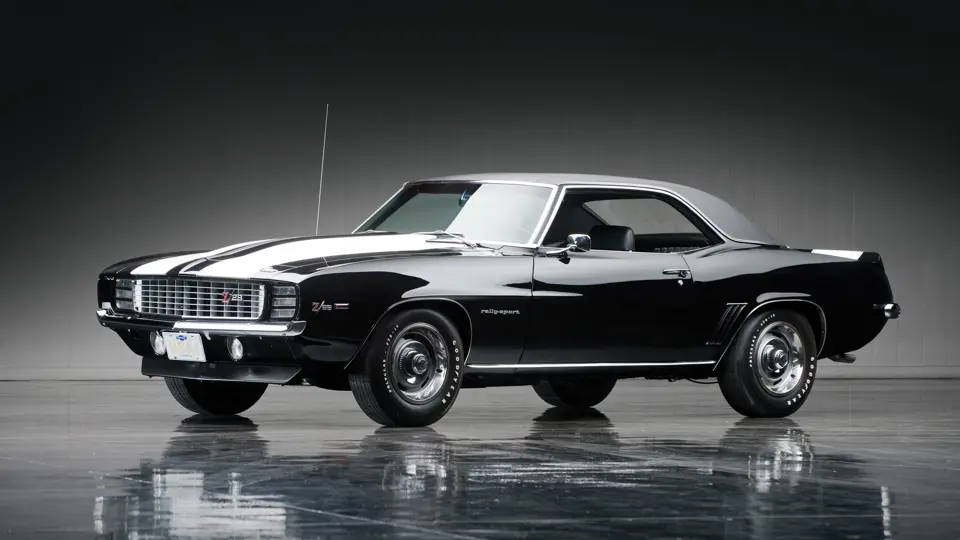
 | Fort Worth, Texas
| Fort Worth, Texas

